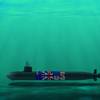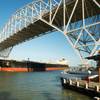The Ocean Conservancy is releasing Cruise Control: How Cruise Ships Affect the Marine Environment. Cruise ships can carry up to 5,000 passengers and produce waste equivalent to that of small cities, yet they are not governed by the same anti-pollution laws as municipalities of comparable size on land. The Cruise Control report recommends a series of necessary governmental actions, including: Regulating all cruise ship discharges; Amending the Clean Water Act to to prevent discharges of raw sewage and toxic chemicals; Requiring the Environmental Protection Agency (EPA) to develop effluent limits, stronger air emission limits and mandatory ballast water treatment programs; Establishing and enforcing no-discharge zones to reduce the impact of cruise ship pollution on special ocean sites; and Increasing funding for the EPA and U.S. Coast Guard enforcement, including aerial surveys and surprise inspections.“The time has come for a sea change in our ocean ethic,” said Roger Rufe, President of The Ocean Conservancy. “For so long people have been allowed to dump anything at sea without any real consequences, people need to feel the same level of responsibility for our seas as they do for their own backyards,” he added. “Cruise ships are like floating cities, carrying thousands of passengers and generating tons of waste and trash each trip. However, unlike cities, cruise ships have largely escaped pollution regulation. We believe it is time to bring the industry in line with accepted pollution control practices,” said Catherine Hazlewood, Acting Director of the Clean Oceans Program for The Ocean Conservancy. In addition to sewage, ships generate solid waste, oily bilge water, air pollution from diesel engines and on-board burning of large volumes of trash, and other pollutants. Cruise ship impacts have increased exponentially with the industry’s dramatic growth. In 1998, 223 cruise ships carried 10 million passengers through some of the world’s most sensitive ocean ecosystems. Since then, the industry has grown by an average of 10 percent annually, and is expected to bring more than 49 new vessels into service by 2005. Cruise Control calls attention to the issues of pollution, and unregulated discharges, and suggests solutions that will protect valuable marine resources, both in U.S. waters and abroad. Two years after The Ocean Conservancy joined the Blue Water Network and 52 other environmental groups in asking the EPA to identify and regulate pollution from cruise ships, the EPA has failed to respond. Today, we sent a copy of our report to EPA officials along with a letter asking them again to respond to the petition. The Ocean Conservancy is alarmed at the direction of EPA’s May 1 proposal to set air emission limits for new vessels at grossly inadequate levels. “We hope this is not an indication of the EPA’s thinking on how to regulate the discharges from cruise ships that are polluting our oceans,” said Roger Rufe, President of The Ocean Conservancy. “We want all discharges from cruise ships regulated with no exemptions,” he added. The new larger cruise ships are over 1,000 feet long and carry more than 5,000 passengers and crew. The largest, at 1,017 feet long, is larger than the U.S. Navy’s largest aircraft carrier and has its own zip code. The impact these “floating cities” have on some of the ecosystems they visit is huge. The pollution generated daily by one large ship includes: 37,000 gallons of oily bilge water, 30,000 gallons of sewage (or black water), 255,000 gallons of non-sewage wastewater from showers, sinks, laundries, baths, and galleys (or gray water), 15 gallons of toxic chemicals from photo processing and dry cleaning solutions, tens of thousands of gallons of ballast water containing pathogens and invasive species from foreign ports, seven tons of garbage and solid waste, and air pollution from diesel engines at a level equal to thousands of automobiles. Cruise ships take travelers through America’s most beautiful places: Glacier Bay, Alaska; Key West, Florida; St. Thomas, U.S. Virgin Islands; Portland, Maine; and San Francisco and Monterey Bay, California. The Ocean Conservancy has staff across the country who can speak to the local and regional impacts of this national and international problem.
Subscribe for
Maritime Reporter E-News
Maritime Reporter E-News is the maritime industry's largest circulation and most authoritative ENews Service, delivered to your Email five times per week










